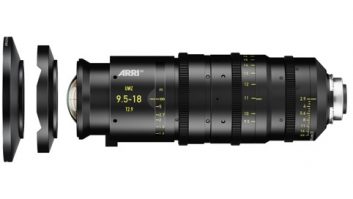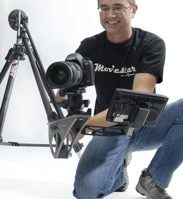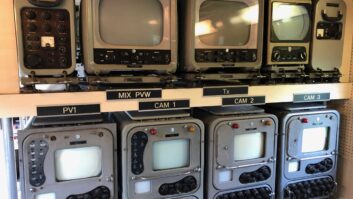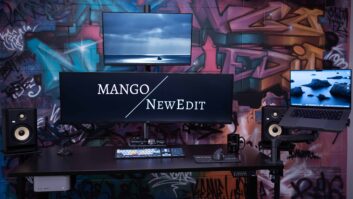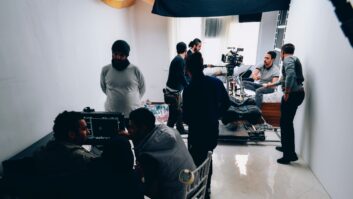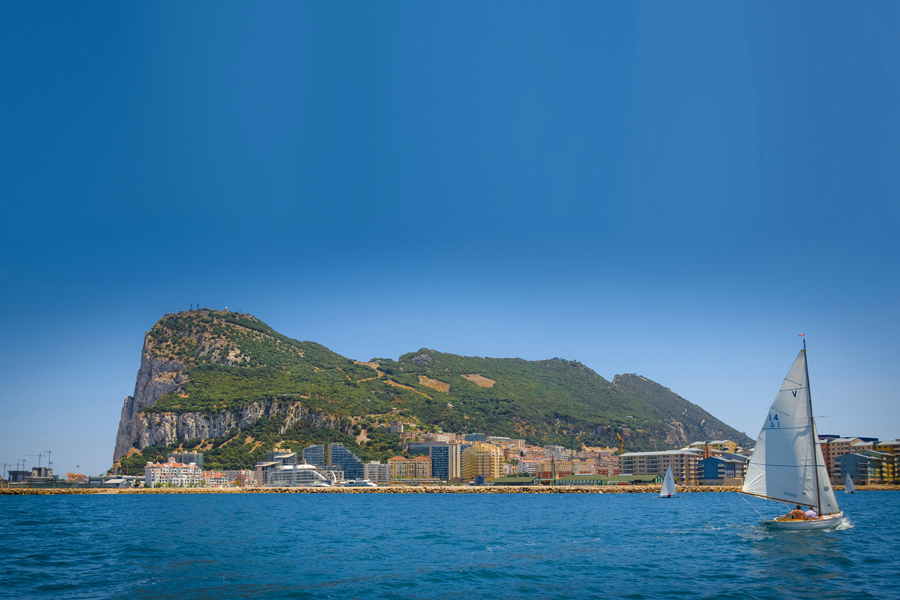
Gibraltar’s TV service began in 1962. At that time, it was a small commercial operation, but it led to the creation, by statute, of the Gibraltar Broadcasting Corporation (GBC) a year later. At the start, the basic operation consisted of a multi-purpose studio and a small continuity booth located in a bastion within the historic Gibraltar city walls.
“Our output was local, fairly low-budget programmes supplemented with internationally acquired programming consisting of movies, drama, comedy, and documentaries,” explains Gerard Teuma, the broadcaster’s chief executive. “In 1980, the station was relocated to its existing premises, which at the time was a huge improvement. That facility, Broadcasting House, was fitted out by Link Electronics.”
Throughout the 80s GBC was able to air the latest international shows, while also producing a consistent number of local programmes. However, the advent of satellite TV dealt a huge blow to GBC TV, which had trouble in re-inventing itself for many years.
“GBC lived through its most difficult years between 1990 and 2013, with lack of investment in technology and programming, and a general lack of direction,” reveals Teuma. “With new management in place, the public subsidy was renegotiated with the Gibraltar government, leading to the recruitment of around thirty new employees. This coincided with the full re-equipping of the station to be full HD. After much work by everyone involved, the channel was relaunched in 2014, and has steadily grown in popularity since then. Our focus now is predominantly on local productions, although we still supplement this with a limited number of internationally acquired programmes.”
Broadcasting cooperation
Working alongside GBC TV in Broadcasting House is Radio Gibraltar. Radio presenters also front TV programmes, with the newsroom servicing both outputs, as well as the online platforms. “Radio Gibraltar is on air 24 hours a day, with presenter-led shows live from 7am till 7pm, and with an automated service at night. Frequencies are split from time to time to provide alternative programming on Radio Gibraltar Plus. Transmissions are on FM, AM, DAB+ and online.”
TV programmes are transmitted terrestrially via the local DTT network called Gibraltar Freeview. This is picked up by two cable operators, which include GBC TV as part of their packages. Together, they service around 13,000 homes on the Rock, with a potential viewership of thirty thousand.
Overcoming obstacles
“Despite the small size, Gibraltar is a difficult location for transmission given the obvious obstacle of the Rock of Gibraltar in the middle of the territory. This means that there are significant shadow areas around it, requiring the use of additional frequencies and/or repeaters.”
Teuma says that despite the move into Broadcasting House some years ago, the other big problem facing GBC TV is its facilities. “We are still housed in very old buildings that are now not really fit for purpose. Although an effort has been made to improve the working environment and a big investment made in technology, there is no escaping the fact that Broadcasting House is far too small for our operation. We have one multi-purpose TV studio, with just one permanent set for news. Given that in addition to that we have a different live show most nights, it means striking sets every morning, with that day’s set built in the afternoon. Sometimes, if there are special recorded programmes, it requires two set changes on that day, which is not ideal.”
Well equipped
That studio is equipped with four Sony HSC100 cameras with Canon lenses. Three are mounted on pedestals, the other on a mini jib. The gallery was completely redesigned and re-equipped in 2013, when a Ross Carbonite 2ME mixer was installed. The transition to HD was managed by UK system integrators TSL, who both designed and installed the gallery and new HD MCR.
“Our directors also vision mix. Invariably, they are also the producers of the programme. With a small operation as ours, multi-tasking is key, and although we employ people in a variety of disciplines, we also need to be realistic and tailor what we do to the funds that are available. Therefore, we are very lucky to have a multi-talented staff base of around 80 professionals who deliver not just TV, but also radio, news, engineering and administration.”
Audio is handled by a Yamaha CL3 console, while communications are provided by Clear-Com. Working alongside the Ross mixer is an Xpression graphics platform.
“It was decided some years ago to adopt Final Cut 7 as the main editing system. We are currently re-evaluating this, with FCPX, Adobe Premier and Avid being considered. All editing, whether for news or other programming, is done on the same platform. All of our newer material is stored on servers, with an exercise currently underway to transfer all of our tape library to a new Sony ODA.”
This Optical Disc Archive was recently installed together with a VSN MAM/PAM system, and the Ross Inception news platform.
“We have four ENG crews working on a shift basis to cover our operations from 9am till 10pm seven days a week. In addition, we have a further three production camera crews who service other programming. They use a range of cameras including Panasonic PX800, and Panasonic DVX200, as well as Cannon DSLRs and GoPros.”
Teuma goes on, “Although we traditionally had our own OB Truck, we decommissioned it upon the transition to HD three years ago. This has been replaced with a hire agreement with a Spanish firm, who drive a truck into Gibraltar as and when required. We carry out around eighteen OBs every year, ranging from four to eight camera productions. We consider this to be more cost-effective, as well as assuring GBC of the latest technology being available for outside broadcasts.
Clearly, there are no other broadcasters based in the British Overseas Territory, but what other channels are available to Gibraltarians? “There’s a range of channels accessible by satellite from the territory, all of which provide challenges for us. Our limited resources make it difficult to compete with international programmes. However, GBC’s strength lies in its local programming, which makes up 75 per cent of the schedule. We have very healthy viewing figures for these shows, which are unavailable elsewhere. Programmes range from news and current affairs to documentary-style shows and reality TV. We principally design our schedule with the local viewer in mind, although movies, drama and international specials are of obvious general appeal. The channel, though, is only seen in Gibraltar, with only local programmes available on our online Player.”
Future thoughts
Teuma reveals that although it would be desirable to extend broadcasting hours, current resources do not provide much scope for this. “With Gibraltar being a small territory, it would not make economic sense to broadcast daytime, when most people are at work. Local audiences principally listen to Radio Gibraltar during the day, and move on to television in the evening. However, we do broadcast Parliamentary sessions during the day, as well as any specials, as and when required. We also extend broadcasting hours on significant days of the year. We currently broadcast from 7.30pm till 11.30pm, but it remains our aim to increase broadcasting hours by one hour from 7pm till midnight in the medium term. This would allow for a more realistic evening schedule.”
So, are there any other plans for the future? “We are currently actively discussing plans to relocate GBC to new premises. This is likely to be our next big project, whereby the intention is to create a media hub associated with a new national theatre for Gibraltar. The idea is still embryonic, but we are confident that in the next few years we will have left our existing facilities and created an exciting future for local television and radio.”
